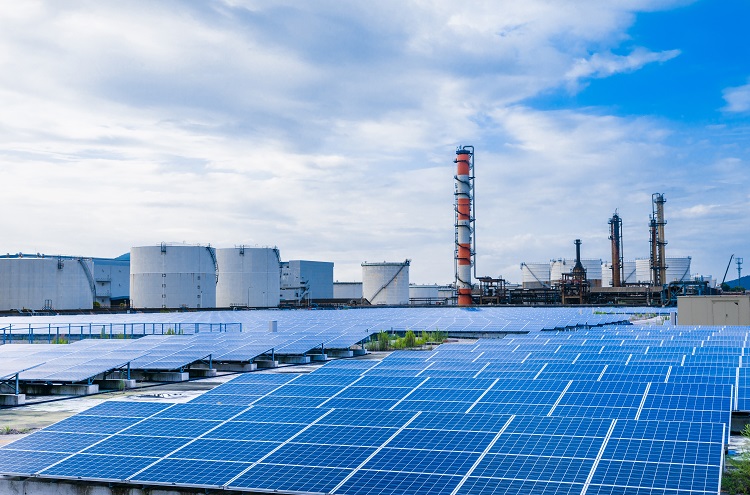Energy Usage in Manufacturing: Renewable Energy Systems

In part two of this three-part series, we partnered with Michael Lewis, Senior Client Advisor for APPI Energy, to highlight how the usage of energy in manufacturing is shifting. Michael entered the renewable energy industry in 2006 when he transitioned from the housing construction industry to installing solar systems for big box retailers in California. During that time, Michael oversaw the growth of a turn-key solar and racking innovator from 4 to 50 employees who built projects across California and the U.S. By 2013, he founded his own solar EPC, engaging directly with solar module and racking manufacturers, property management companies, and public works entities, building solar projects across the western United States. After successfully growing his own company, Michael transitioned to the management and development of utility scale solar farms. Michael consulted on over 1GW of utility scale solar farms from land acquisition and feasibility studies, off-taker negotiations, design, permitting, planning, construction, grid synchronization, and the long-term O&M of these assets. Michael focuses on renewable energy, EV infrastructure, and sustainability, is a licensed electrical contractor, and enjoys reading about everything sustainability, technology, and energy related. In his free time, Michael practices hot yoga, runs regularly, makes time to surf, and enjoys getting out into nature. Michael graduated from the College of Charleston in 2003 and resides in his hometown of Richmond, Virginia.
In part two, we will touch on renewable energy sources with a focus on solar.
Are there opportunities for companies to generate and supplement their current energy system?
Companies that have not yet explored solar as an investment toward hedging future costs of electricity should take a look at it now. The federal incentives allow for a 26% tax credit plus exercising 100% of the MACRS bonus depreciation schedule in year one. The result is a tax benefit of over half of the investment in year one. Even in northern latitudes where solar is typically not as cost effective, current incentives both federally and locally, coupled with rising costs of electricity, make solar worth a look. We also strongly suggest looking at waste heat recovery systems in manufacturing processes of all sorts. As of 2019, there were federal incentives of up to 26% for several types of waste heat recovery systems.
Can you elaborate on solar energy systems and talk a little more about the incentives?
Solar energy systems are commoditized at this point. The market is mature enough to where we know the expected costs across North America. Solar panels have a 25-year production warranty, and most financial modeling will show the expected pro forma model across this 25-year warranty period. Solar inverters will typically need to be replaced between years 11 and 15; however, the panels themselves can continue to produce power well past the 25-year warranty date. Solar works through a utility agreement called net metering. Where the solar overproduces electricity during peak summer months or during certain hours of the day, this excess production of kilowatt hours is sent back to the grid and net metered. As the day turns to night or the summer months turn into winter months of lower solar panel power production, these excess kilowatt hours are now credited back to the facility for the net cost value to the facility.
What is the typical payback period for a solar system?
Using basic numbers for reference, a cash investment of $100,000 will realize the two federal incentives in year one for entities able to use the tax incentives—entities with a tax liability. This equals a year one tax savings of $26,000 and roughly $28,000 depending on the tax structure of the entity. That initial investment of $100,000 is now down to $46,000. Estimated savings in electricity may be in the range of $7,000 to $11,000 per year, depending on the utility, meaning a payback of roughly 4 to 8 years. Some states and individual utilities offer additional incentives, further reducing this payback period.
What is important to understand with solar power systems?
Of note, it is a misconception with solar that in the case of a power outage, solar will provide a backup source of power. Solar inverters function in sync with the frequency of the grid. In a power outage, this frequency is disrupted, which triggers the inverters to go offline. Inverters will not produce solar power during any power outage. To get around this feature, it is necessary to install batteries with a solar power system. The battery power inverter communicates with the solar inverter, telling it essentially “the grid is down, but now I am the grid.” Solar power inverter will restart working in sync with the battery inverter.
An insurance company that cares about you and insuring the things you wish to be insured.
Get a Quote> Find an Agent>

